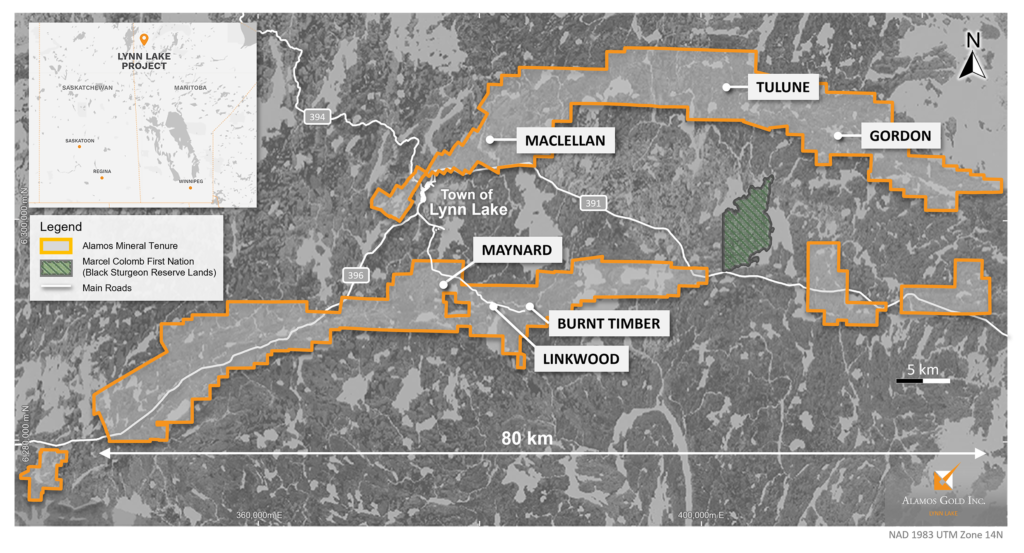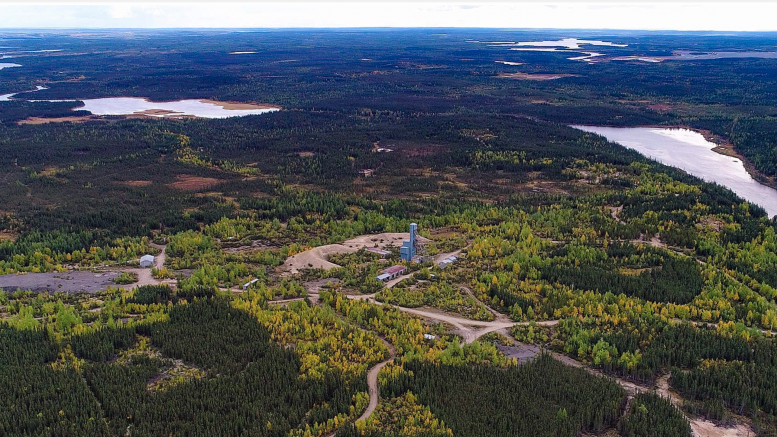An updated feasibility study on Alamos Gold’s (TSX: AGI; NYSE; AGI) Lynn Lake project in Manitoba, Wednesday showed a big increase in reserves, but also a big increase in expected capital expenditures.
Despite the latest feasibility study outlining the potential for a larger, longer lasting, and cost-efficient operation, it comes at an 87% higher price tag at US$632 million, some US$294 million more than the initial 2017 capex estimate of US$338 million. The total life of mine capital per ounce increased by 17% to US$381 from the 2017 study.
The base case scenario assumes a gold price of US$1,675 per oz. and reflects an after-tax net present value (5%) of US$428 million and an after-tax internal rate of return of 17%. At current gold prices of around US$1,950 per oz., the after-tax NPV (5%) is US$670 million with an after-tax IRR of 22%.
While the study showcases higher production estimates, improved cost efficiency and extended mine life compared with the previous report, Haywood Securities mining analyst Kerry Smith said the economics could be improved with a larger mineable reserve.
“The project return is acceptable; we think this district would provide a great return at 3 million oz. mineable, which is a realistic target we believe,” the analyst wrote in a note to clients.
Kerry notes Alamos has “plenty of time” to continue its exploration efforts, as this project would not be funded until the Island Phase 3+ project is complete in 2026.
Alamos CEO, John McCluskey, said the project is part of its strategy to sustain the company’s longer-term growth aspirations.
“Through Lynn Lake, Island Gold and Young-Davidson (both in Ontario), we have three high-quality assets that can support over 650,000 oz. of annual production in Canada, at all-in sustaining costs below US$1,000 per oz. over the long-term,” McCluskey said.
Alamos plans to fund Lynn Lake internally, leveraging its strong financial position, which includes US$189 million in cash as of June 30, no debt, and strong free cash flow generation.

The study outlines higher production on the front end of the mine plan, with the first five years projected to yield an average yearly gold output of 207,000 oz., with the initial 10 years averaging 176,000 ounces. This represents a noteworthy 23% increase from the 2017 study’s annual average of 143,000 ounces.
The study proposes a more cost-effective operation. The expected mine-site all-in sustaining costs are US$699 per oz. over the first decade and US$814 per oz. over the entire mine life. This reflects a 6% reduction in costs over the initial 10 years compared to the 2017 study, attributed to economies of scale and improved average grades.
The feasibility is underpinned by a 44% boost in the proven and probable mineral reserve, totalling 2.3 million oz. with a grade of 1.5 grams gold per tonne, supporting an extended 17-year mine life (up from 10 years in the 2017 study) and an increase in life-of-mine production by 46% to 2.2 million ounces.
The company received environmental impact statement approval and provincial licences in March.
The Lynn Lake project offers considerable exploration potential, including opportunities at the Gordon deposit, Burnt Timber, Linkwood, and other regional targets.
On the sustainability front, the study highlights an 18% decrease in greenhouse gas emissions per ounce compared to the 2017 study, now incorporating electric shovels and drills at the MacLellan pit, and productivity improvements with the larger operation. The project will also connect to Manitoba’s clean electric grid.
Alamos’ equity is up 55% over the past 12 months at $15.44, having touched $8.74 and $19.18. It has a market capitalization of $6 billion.


Be the first to comment on "Alamos feasibility reveals big reserves increase, capex required"